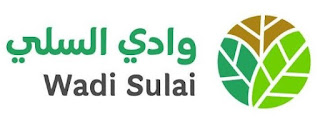Irrigation Water Quality
https://link.springer.com/chapter/10.1007/978-3-319-96190-3_5
ABSTRACT:
The quality of irrigation waters differs in various regions, countries and locations based on how the groundwater has been extracted and used, the rainfall intensity and subsequent aquifer recharge. The use of groundwater for agriculture in hot arid countries where rainfall is scarce leads to increase groundwater salinity and limits the selection of crops for cultivation. It is therefore important to determine the irrigation water quality. The concentration and composition of soluble salts in water determines its quality for irrigation. Four basic criteria for evaluating water quality for irrigation purposes are described, including water salinity (EC), sodium hazard (sodium adsorption ratio-SAR), residual sodium carbonates (RSC) and ion toxicity. Toxicities of boron and chlorides to plants are described. More specifically the relative tolerance levels of plants to boron is tabulated for easy understanding. The most important part of this chapter is the modification of water quality diagram of US Salinity Laboratory Staff published in the year 1954, this diagram does not present EC over 2250 μS cm-1, however, most of the irrigation waters present salinity levels higher than 2250 μS cm−1. Therefore, to accommodate higher water salinity levels the water classification diagram is extended to water salinity of 30,000 μS cm−1 allowing the users of the diagram to place EC values above 2250 μS cm−1. The salinity and sodicity classes are included in this chapter to provide information for crop selection and develop salinity and sodicity management options. The procedures for water salinity reduction through blending of different waters and management of water sodicity using gypsum are described by giving examples.
1. INTRODUCTION:
Water scarcity is seen as a major constraint to intensify agriculture in a sustainable manner as an attempt to meet the food requirements of a rapidly growing human population. The ever increasing human population, climate change due to increased emissions of greenhouse gases (GHGs), and intensification of agriculture, are putting severe pressure on the world’s two major non-renewable resources of soil and water, and thus pose a big challenge to produce sufficient food to meet the current food demand. The present world population of 7.3 billion people is predicted to grow to over 9 billion by 2050, with the majority of this population increase occurring in developing countries, most of which already face food shortages. A 70% increase in current agricultural productivity will be required to produce sufficient food if these human population growth predictions prove to be correct. In this context, concerted efforts are being made globally to improve the effectiveness of water which will be used for enhancing the production of irrigated crops. Additionally, efforts are also being made to improve water harvesting and water conservation in rain-fed agriculture.
The injudicious use of saline/brackish water is all too often associated with the development of soil salinity, sodicity, ion toxicity, and groundwater pollution. Because of these negative effects, it is important to have a better understanding of exactly how the quality of water influences the management of irrigated agriculture, especially in arid and semi-arid regions.
Salinity, sodicity and ion toxicity are major problems in irrigation waters. In arid areas, where rainfall does not adequately leach salts from the soil, an accumulation of salts will occur in the crop’s root-zone. Thus, periodic testing of soils and waters is required to monitor any change in salt content. Sodicity, the presence of excess sodium, will result in a deterioration of the soil structure, thereby reducing water penetration into and through the soil. Toxicity refers to the critical concentration of some salts such as chloride, boron, sodium and some trace elements, above which plant growth is adversely affected by those salts.
This chapter addresses several aspects of irrigation water quality and criteria to determine water quality. It will also cover management issues and soil responses to the use of irrigation water of varying quality. The information presented in this chapter is an updated and improved version of an excerpt from an earlier irrigation water quality manual
2. QUALITY IF IRRIGATION WATER:
The concentration and composition of soluble salts in water will determine its quality for various purposes (human and livestock drinking, irrigation of crops, etc.). The quality of water is, thus, an important component with regard to sustainable use of water for irrigated agriculture, especially when salinity development is expected to be a problem in an irrigated agricultural area.
Total content of soluble salts (salinity hazard)
Relative proportion of sodium (Na+) to calcium (Ca2+) and magnesium (Mg2+) ions – sodium adsorption ratio (sodium hazard)
Residual sodium carbonates (RSC) – bicarbonate (HCO3−) and carbonate (CO32−) anions concentration, as it relates to Ca 2+ plus Mg2+ ions.
Excessive concentrations of elements that cause an ionic imbalance in plants or plant toxicity.
In order to achieve the first three important criteria, the following characteristics need to be determined in the irrigation waters: electrical conductivity (EC), soluble anions (CO32−, HCO3−, Cl− and SO42−) where Cl− and SO42− are optional and soluble cations (Na+, K+, Ca2+, Mg2+) where K is optional. Finally, boron level must also be measured. The pH of the irrigation water is not an acceptable criterion of water quality because the water pH tends to be buffered by the soil, and most crops can tolerate a wide pH range. A detailed description of the techniques commonly employed for the analysis of irrigation water is available (USSL Staff 1954; Bresler et al. 1982).
2.1 SALINITY
Excess salt increases the osmotic pressure of the soil solution, a situation that can result in a physiological drought condition. Thus, even though the soil in the field appears to have plenty of moisture, the plants will wilt. This occurs because the plant roots are unable to take up soil-water due to its high osmotic potential. Thus, water lost from the plant shoot via transpiration cannot be replenished, and wilting occurs.



Comments
Post a Comment